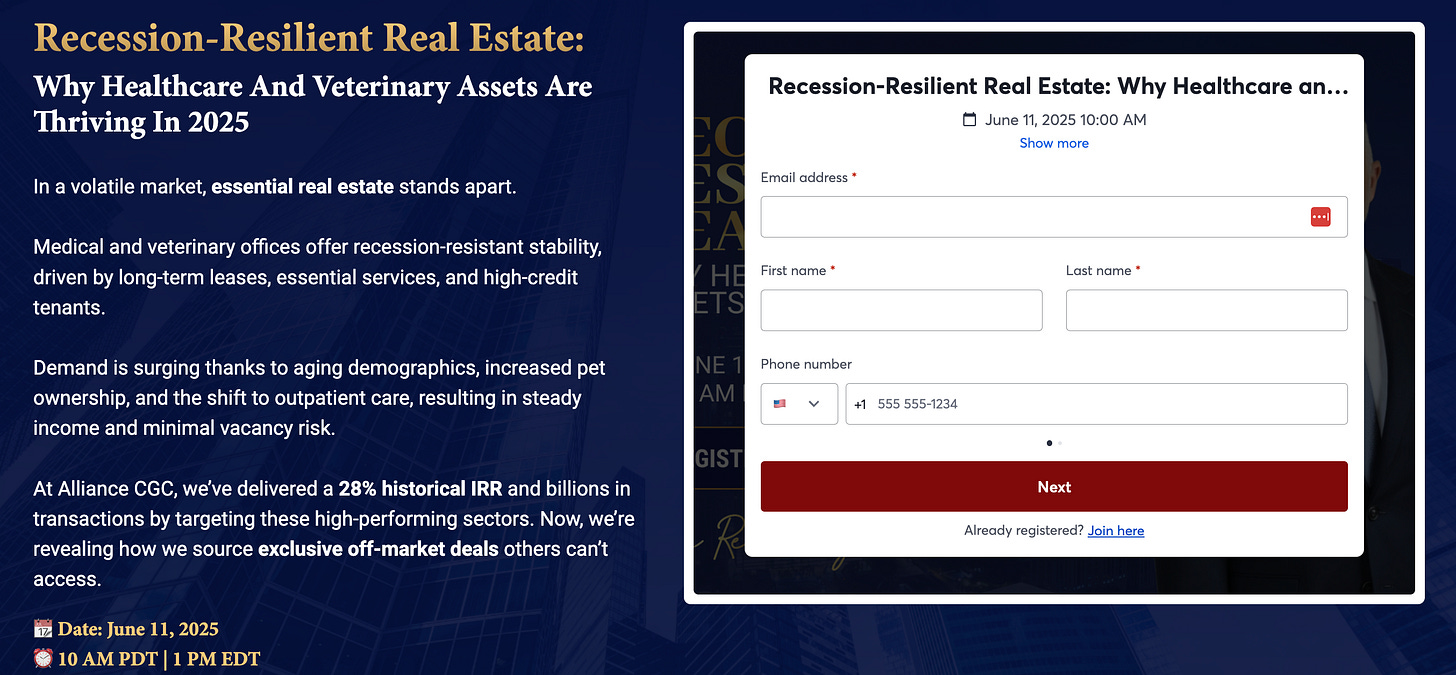The Real Estate Wealth Squeeze: What Yellen Set in Motion—What Bessent Is Managing Now, and What it Means to You
Monday's Alliance Intelligence Briefing
Your Property Is the New ATM for the Government
America’s $37 trillion debt is not just a headline—it's a fiscal time bomb. Former Treasury Secretary Janet Yellen laid the groundwork for a solution: grow the GDP faster than the debt through asset inflation, especially in real estate. Now, under current Treasury Secretary Scott Bessent, the strategy hasn’t been dismantled. It’s being adapted.
Real estate investors stand at the center of this shift. Whether you're holding multifamily units, commercial medical properties, or net lease portfolios, you’re either building generational wealth or subsidizing government revenue.
Understanding the playbook behind this debt strategy is essential if you want to avoid becoming collateral damage in the coming tax wave.
What Janet Yellen Initiated
Yellen’s tenure emphasized stabilizing the debt-to-GDP ratio by inflating nominal asset values. The logic is that if the economy appears larger on paper, the burden of the debt shrinks proportionally. This wasn't done by increasing productivity or exports, but by:
Expanding the money supply
Inflating the price of assets like real estate
Increasing local property tax bases through reassessments
Driving up capital gains taxes through appreciation
Encouraging mortgage-backed debt expansion via federal agencies
In short, real estate became the most efficient and politically viable revenue engine the government could quietly tap.
What Scott Bessent Is Doing Now
Scott Bessent, confirmed as Treasury Secretary in early 2025, brings a market-savvy, hedge-fund-informed perspective to economic policy. His approach diverges from Yellen’s in tone and tactics, but not in the broader reality that real estate remains central to the nation’s fiscal stability.
Key shifts under Bessent include:
Tighter trade and tariff policies are designed to strengthen U.S. domestic production
A stronger-dollar orientation, which increases relative interest rate pressure
Continued use of real estate as a tax and leverage mechanism, albeit with a more conservative macroeconomic lens
Bessent may slow down the monetary expansion, but the fiscal reliance on asset inflation remains a pillar of U.S. debt policy.
The Four-Tier Property Monetization Mechanism
Real estate investors need to understand how government policy continues to extract value from their holdings in four core ways:
The Inflation Tax
Rising property values (driven by money printing and asset inflation) result in higher property taxes and capital gains liabilities, without delivering more services or value in return.The Assessment Trap
Local governments reassess home and building values, often inflating tax bills disproportionately. When owners can’t pay, tax liens and forced sales follow, frequently benefiting institutional buyers and politically connected investors.The Forced Sale Squeeze
As tax burdens increase, financially stretched owners are forced to sell. This triggers transfer taxes, resets taxable basis, and increases annual tax collection—all from one distressed transaction.The Mortgage Leverage Loop
Government-backed mortgages continue to enable higher loan-to-value lending, which pushes prices upward, increasing debt loads and interest payments—all of which feed back into the financial system, supporting government debt issuance.
Strategies for Investors to Stay Ahead
To remain on the profitable side of this policy environment, real estate investors should adopt the following playbook:
1. Acquire income-producing real estate using long-term fixed-rate debt.
Lock in today’s rates. As inflation rises and rents follow, your cost of capital remains static, increasing net operating income and long-term equity value.
2. Target landlord-friendly jurisdictions.
Invest in states and municipalities with slower reassessment cycles, lower millage rates, and strong legal protections for landlords. Sunbelt states and low-tax zones remain attractive.
3. Appeal property assessments regularly.
Tax appeal strategies can preserve 10–30% of net cash flow annually. Build this into your asset management cadence.
4. Use tax-efficient structures.
Opportunity Zone Funds (QOFs), Delaware Statutory Trusts (DSTs), and LLC pass-throughs offer capital gains deferral and wealth transfer efficiencies.
5. Hedge your portfolio’s monetary exposure.
A 5–10% allocation to physical gold, cold-stored Bitcoin, and productive hard assets can act as an off-ramp if currency instability or capital controls escalate.
Why This Matters Now
Secretary Bessent isn’t dismantling the machine that Yellen built—he’s refining it. The real estate sector is still the most efficient target for silent taxation. Without structural reform, investors who don’t reposition their holdings will face:
Increasing tax pressure without corresponding service improvements
Liquidity traps via reassessments and insurance cost spikes
Higher forced sale rates among over-leveraged operators
Reduced purchasing power on rental cash flows due to hidden inflation
Upcoming Investor Strategy Webinar – June 11th
If you want to learn how we’re positioning to benefit from this policy environment—and not become its next victim—join me and the Alliance team for an exclusive investor webinar:
Date: Tuesday, June 11, 2025
Time: 10:00 AM PT | 1:00 PM ET
Duration: 45 minutes + live Q&A
~Ben Reinberg, CEO, Alliance Consolidated Group of Companies






